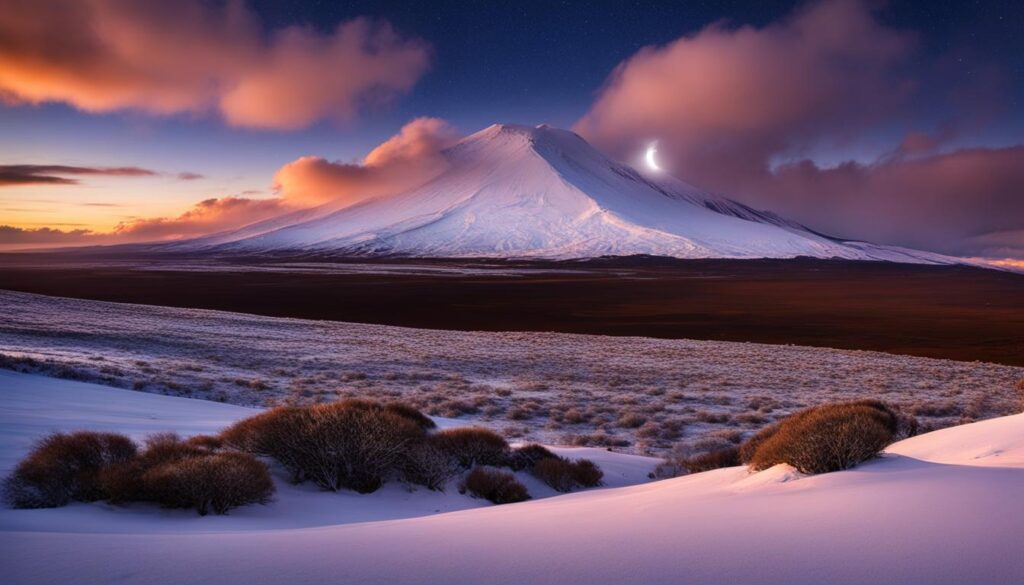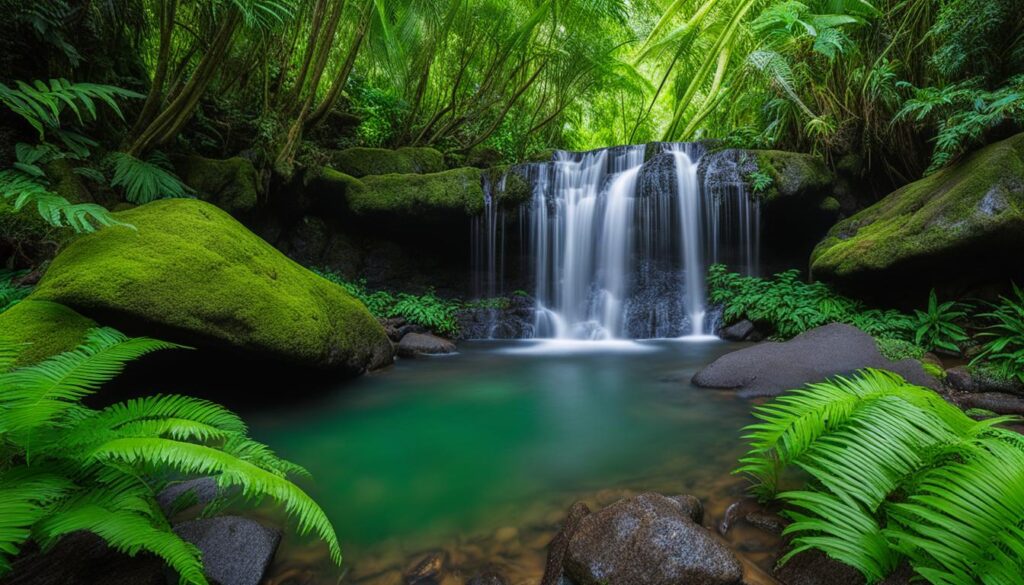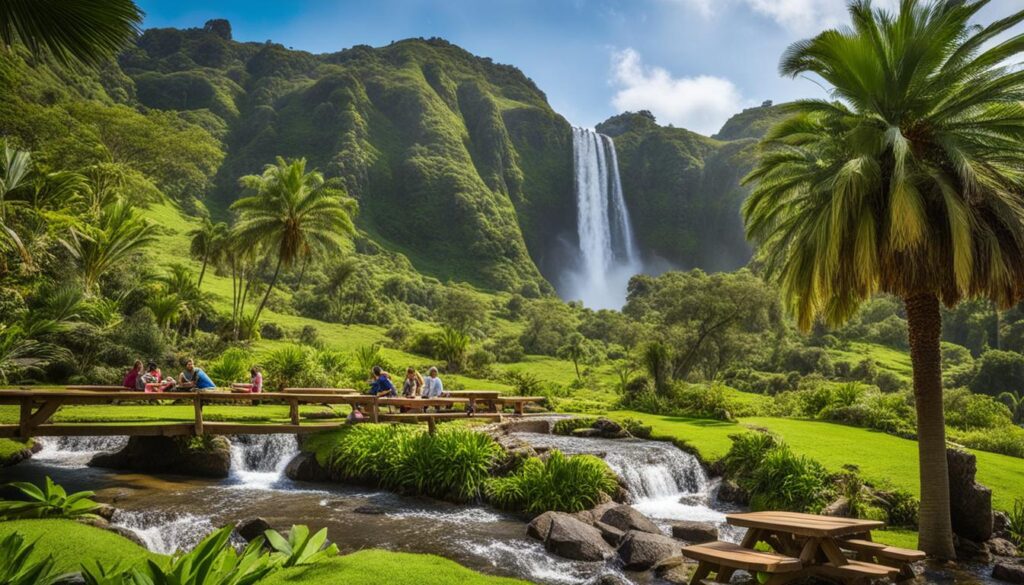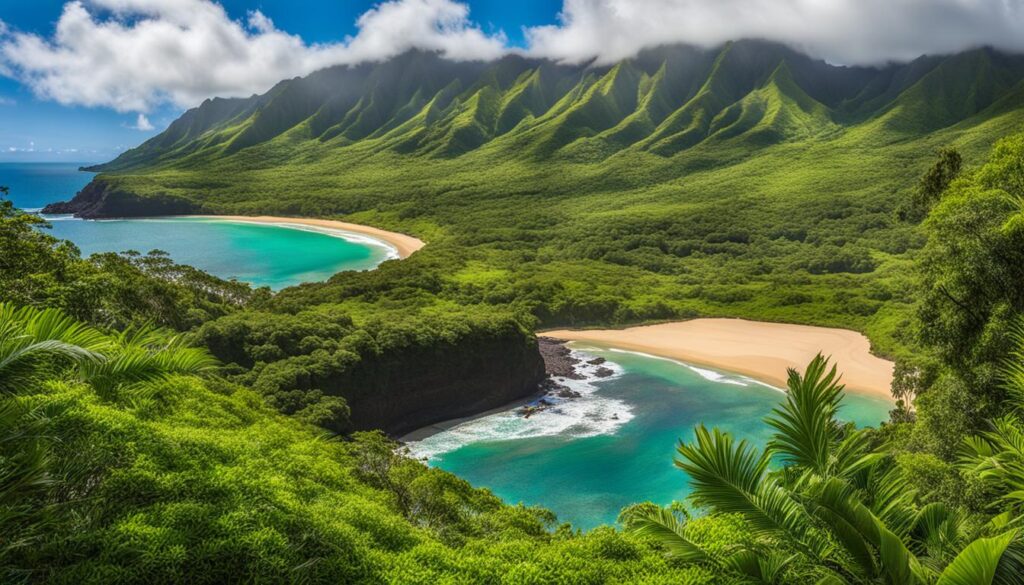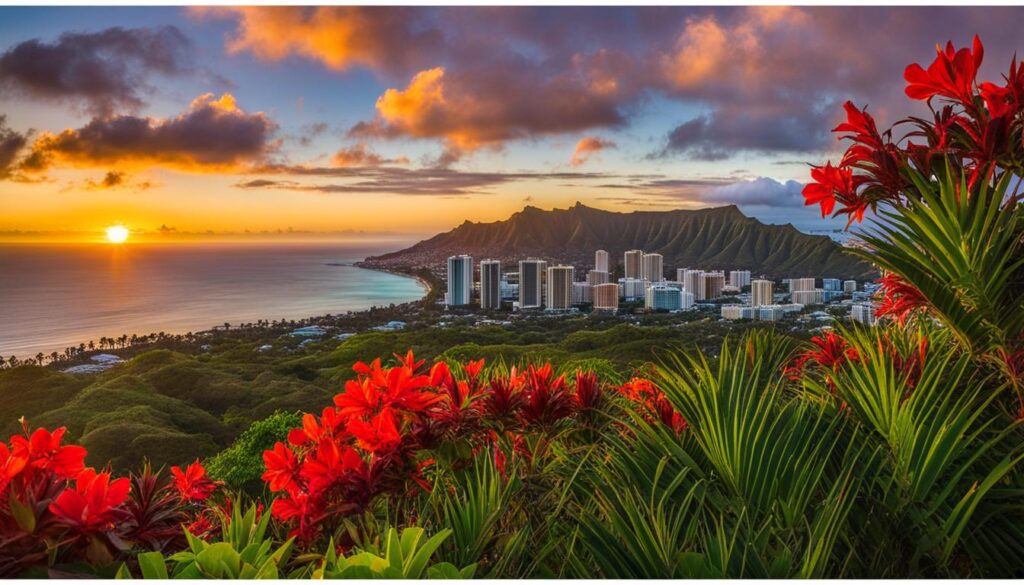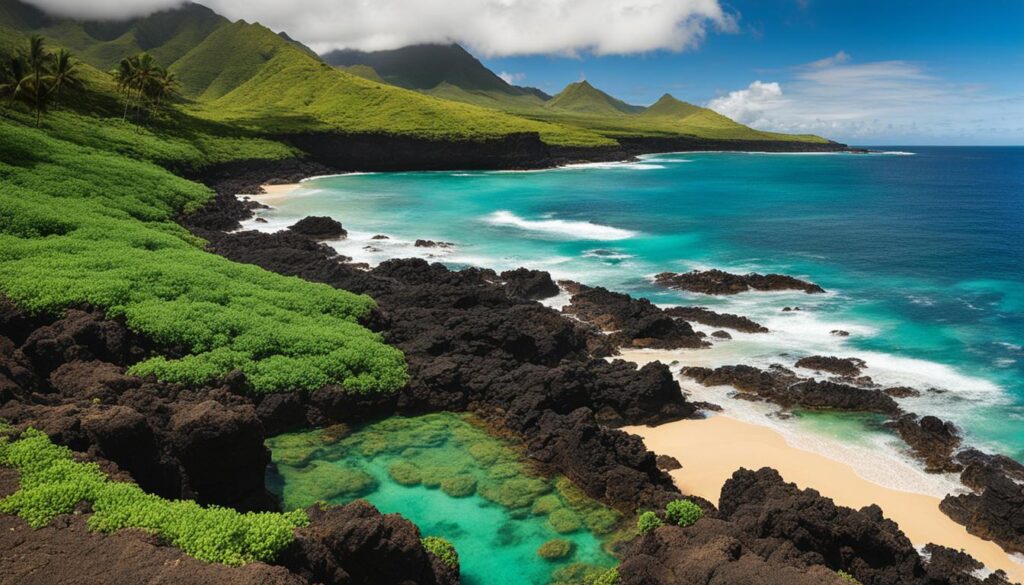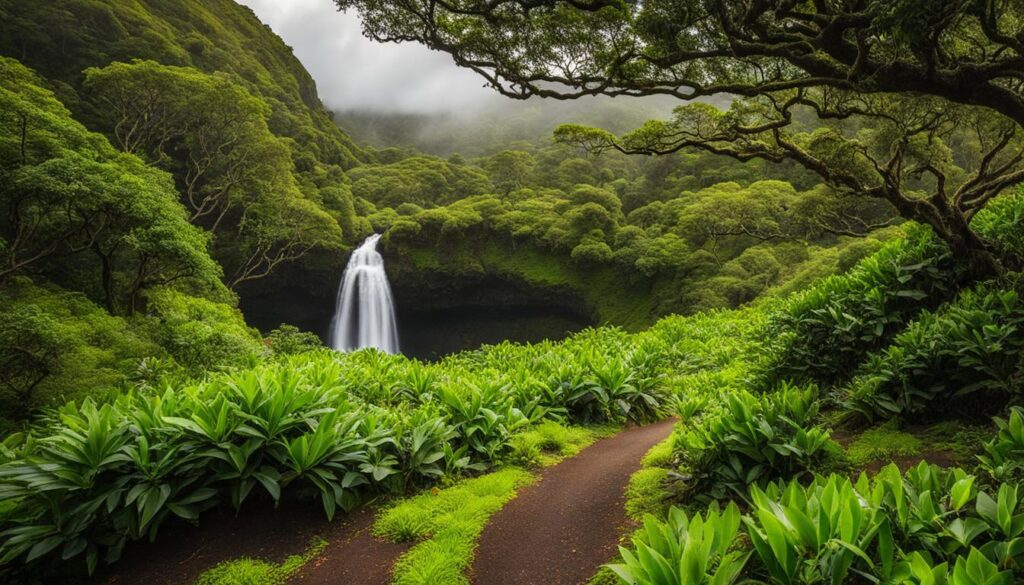Welcome to the Mauna Kea Ice Age Reserve, a unique natural area in Hawaii that offers a glimpse into the geological past of the region. Spanning 3,894 acres, the reserve was established in 1981 and is located on the southern summit flank of Mauna Kea.
Featuring sparsely vegetated cinder and lava deserts, as well as rare communities such as an invertebrate-dominated aeolian desert and the state’s only alpine lake, the reserve is home to four natural communities, two of which are rare. It also supports a variety of native plants and animals, including some rare species. In addition to its biological significance, the reserve holds important archaeological and geological features.
Key Takeaways:
- Mauna Kea Ice Age Reserve offers a glimpse into the geological past of Hawaii.
- The reserve features sparsely vegetated cinder and lava deserts, rare communities, and an alpine lake.
- It is home to diverse native plants and animals, including some rare species.
- The reserve holds archaeological and geological significance.
- Exploring the Mauna Kea Ice Age Reserve provides a unique opportunity to connect with Hawaii’s natural and cultural heritage.
Contents
Essential Information
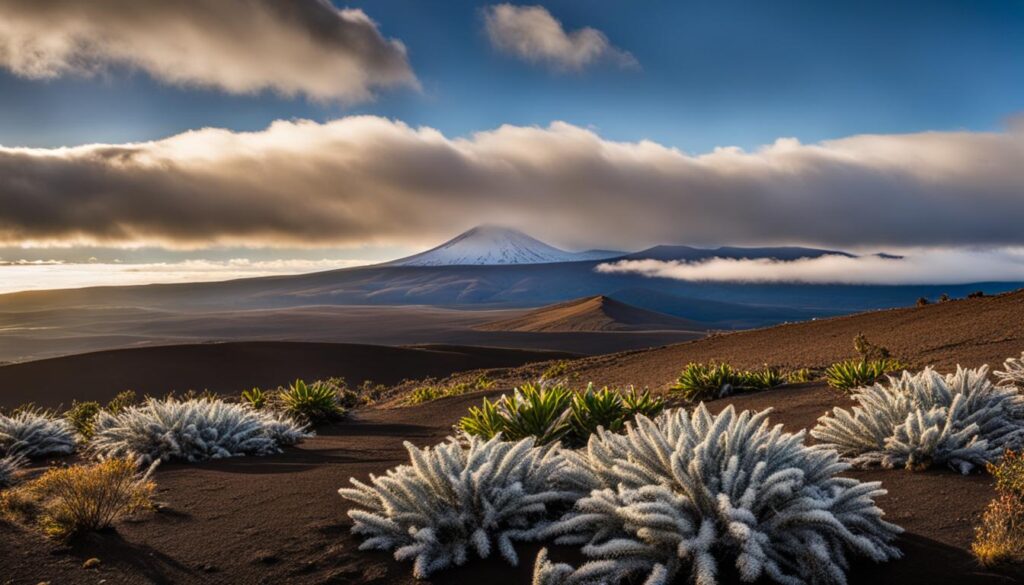
When planning a visit to the Mauna Kea Ice Age Reserve, it’s important to have essential information to make the most of your trip. Located on the southern summit flank of Mauna Kea in Hawaii, the reserve spans 3,894 acres and showcases unique natural features. Established in 1981, the reserve is known for its sparsely vegetated cinder and lava deserts, providing a rugged and otherworldly landscape.
The Mauna Kea Ice Age Reserve is home to rare natural communities, including an invertebrate-dominated aeolian desert and the state’s only alpine lake. It supports a variety of native plants and animals, some of which are considered rare species. As a protected area, it’s important to be aware of certain regulations that may apply. Visitors are required to obtain the necessary permits and follow guidelines set forth by the reserve management to ensure the preservation of this unique ecosystem.
Whether you’re a nature enthusiast, history buff, or simply looking to immerse yourself in the beauty of Hawaii’s geological past, the Mauna Kea Ice Age Reserve offers a remarkable experience. With its diverse landscapes, archaeological sites, and stunning views, it’s a destination that should not be missed.
Park Highlights
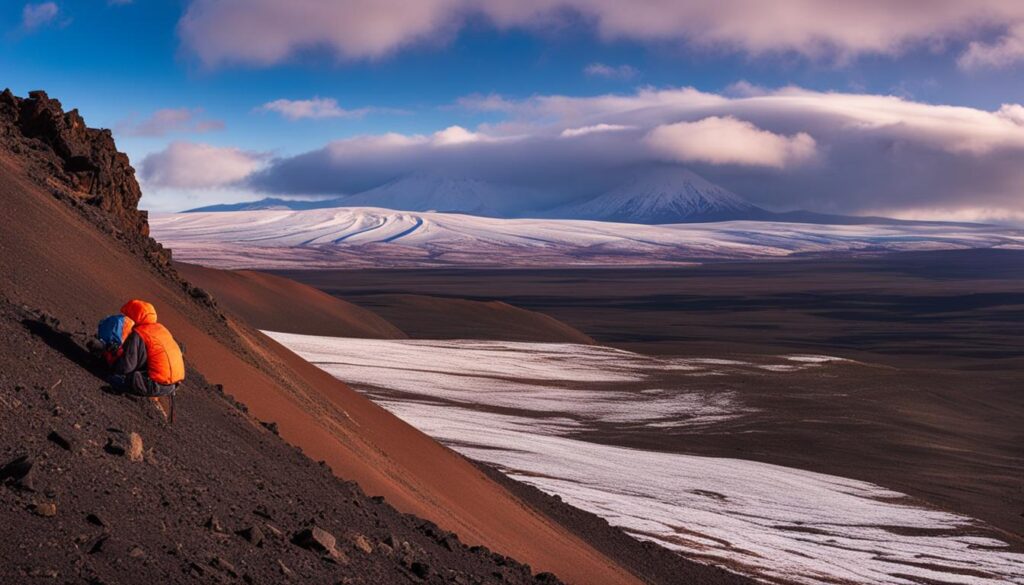
The Mauna Kea Ice Age Reserve offers several highlights for visitors to explore. One of the standout features is the rare aeolian desert, which is dominated by invertebrates. This unique ecosystem provides a fascinating glimpse into the adaptations of desert-dwelling species. Another highlight is the alpine lake, which is the only one of its kind in the state. The lake’s serene surroundings and crystal-clear waters make it a popular spot for nature lovers. Additionally, the reserve boasts impressive geological formations and archaeological sites, showcasing the rich history of the area.
Visitors to the Mauna Kea Ice Age Reserve can experience the awe-inspiring beauty of the rare aeolian desert. This desert, characterized by its sparsely vegetated cinder and lava deserts, is teeming with unique invertebrate species. It is a captivating sight for those interested in desert ecosystems and the adaptations of its inhabitants. The alpine lake within the reserve is another must-see highlight. With its tranquil setting and pristine waters, it offers an ideal place for relaxation and appreciation of the surrounding natural beauty. The reserve also features impressive geological formations and archaeological sites that provide insights into the region’s geological history and ancient cultures.
A visit to the Mauna Kea Ice Age Reserve provides opportunities to witness the remarkable aeolian desert, a rare natural community dominated by invertebrates. Exploring this unique ecosystem offers a chance to observe the fascinating adaptations of desert-dwelling species. The reserve’s alpine lake is a captivating sight, offering a serene escape and a chance to connect with nature. The reserve’s geological formations and archaeological sites add further depth to the visitor experience, providing a glimpse into the area’s rich history. From the rare aeolian desert to the alpine lake and beyond, the Mauna Kea Ice Age Reserve offers a range of highlights that make it a must-visit destination for nature enthusiasts and history buffs alike.
Visiting the Mauna Kea Ice Age Reserve is an opportunity to explore the exceptional highlights that make this natural area truly unique. The rare aeolian desert, dominated by invertebrates, showcases the remarkable adaptations of desert-dwelling species. The alpine lake, the only one of its kind in the state, provides a serene and picturesque setting for nature lovers. Additionally, the reserve’s geological formations and archaeological sites offer a glimpse into the region’s rich history. With its diverse highlights, the Mauna Kea Ice Age Reserve is a must-visit destination for those seeking to immerse themselves in the wonders of Hawaii’s geological past.
Activities
Visitors to the Mauna Kea Ice Age Reserve can engage in various activities to make their visit memorable. One popular option is hiking, with a 40-minute trail leading to Lake Waiau, an archaeological site that still preserves remnants of ancient pre-contact Hawaiian culture. The hike offers stunning views of the surrounding landscape and provides an opportunity to learn about the area’s history.
Bird watching is another enjoyable activity in the reserve, as it is home to a diverse range of native bird species. The reserve’s unique ecosystems attract a variety of colorful and fascinating birds, making it a paradise for bird enthusiasts. Stargazing is also a highlight at the reserve, thanks to its high elevation and minimal light pollution. Visitors can witness breathtaking views of the night sky and observe celestial wonders.
Photography enthusiasts will find plenty of opportunities to capture stunning landscapes and unique flora and fauna. The reserve’s volcanic features and contrasting landscapes provide a picturesque backdrop for capturing the beauty of the area. Whether it’s capturing the vibrant colors of a Hawaiian sunset or capturing the intricate patterns of a lava flow, there is something for every photographer at the Mauna Kea Ice Age Reserve.
Nature Walks
For those interested in exploring the reserve’s diverse plant life and wildlife, nature walks are a recommended activity. The reserve supports a variety of native plants, including rare species, and serves as a habitat for unique and endangered animals. Guided nature walks are available, allowing visitors to learn more about the reserve’s ecology and conservation efforts. These walks provide the opportunity to spot native wildlife, such as the palila bird or the Mauna Kea silversword, and gain a deeper appreciation for the reserve’s biodiversity.
| Activity | Description |
|---|---|
| Hiking | Explore the reserve’s trails and discover archaeological sites |
| Bird Watching | Observe a diverse range of native bird species in their natural habitat |
| Stargazing | Experience the awe-inspiring night sky at a high elevation with minimal light pollution |
| Photography | Capture the stunning landscapes, unique flora, and fauna of the reserve |
| Nature Walks | Discover the reserve’s diverse plant and animal life through guided tours |
Accommodations
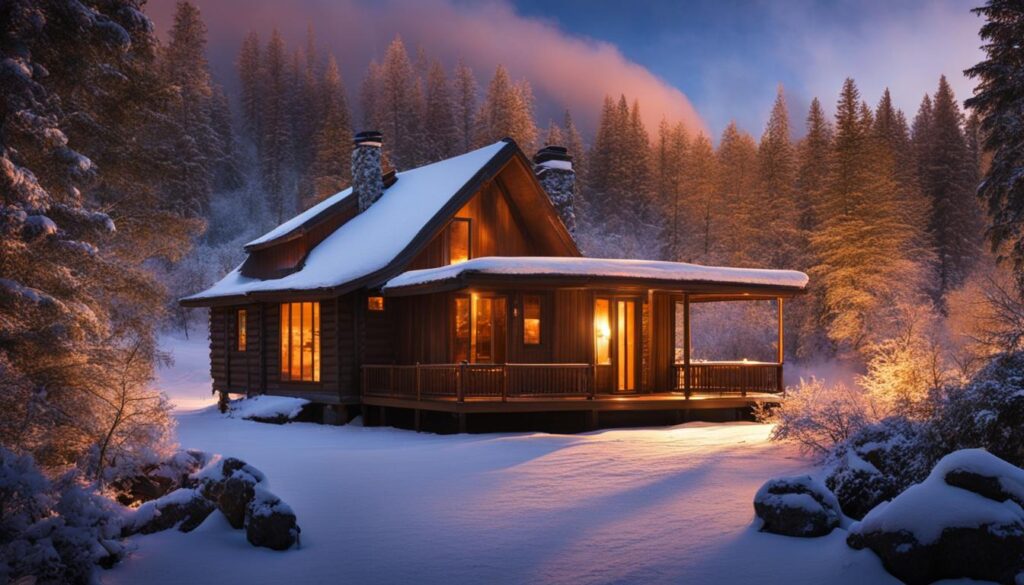
While exploring the Mauna Kea Ice Age Reserve, visitors have a range of accommodation options available nearby. Whether you prefer hotels, lodges, or vacation rentals, there are plenty of choices to suit your needs. The surrounding area provides a comfortable base for your visit to the reserve, ensuring that you have a convenient place to rest and rejuvenate after a day of exploration.
It is advisable to make advance reservations for accommodations, particularly during peak travel seasons. By planning ahead, you can secure your preferred lodging and have peace of mind knowing that you have a place to stay. Additionally, keep in mind that camping may be allowed in certain designated areas within the reserve, subject to permits and regulations. For more information on camping options, it is recommended to check with the reserve management.
Accommodation Options
| Accommodation Type | Details |
|---|---|
| Hotels | Various hotels offer comfortable rooms and amenities for a convenient stay near the reserve. |
| Lodges | Lodges provide a cozy atmosphere and often offer additional services such as dining and outdoor activities. |
| Vacation Rentals | For a more home-like experience, vacation rentals offer the flexibility of having your own space. |
By choosing accommodations near the Mauna Kea Ice Age Reserve, you can make the most of your visit and fully immerse yourself in the natural beauty and history of the area. Whether you prefer the convenience of a hotel, the charm of a lodge, or the comfort of a vacation rental, there are options to suit every traveler’s preferences and budget.
Exploring the Area
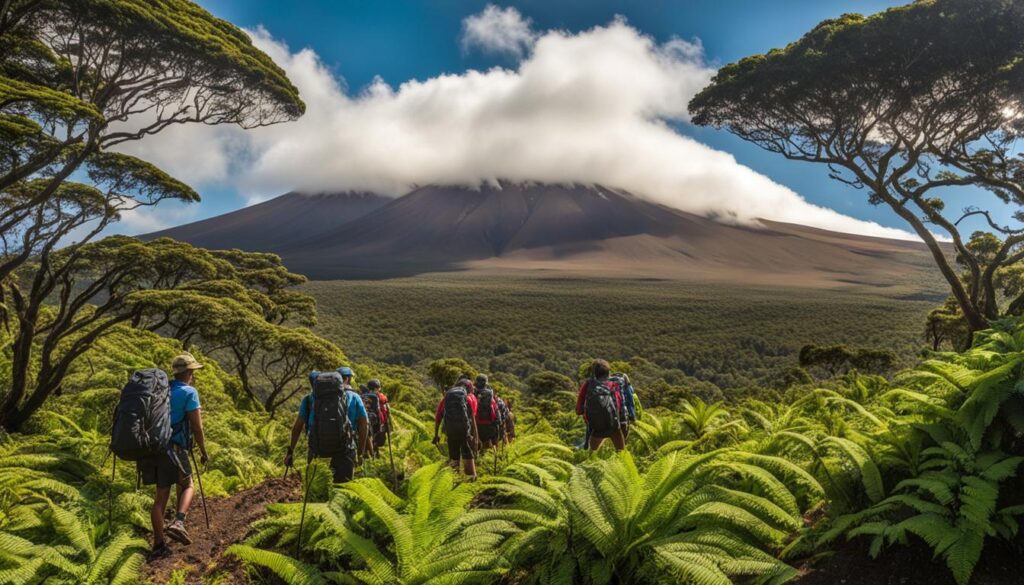
Exploring the area around the Mauna Kea Ice Age Reserve offers a wealth of opportunities to discover the natural beauty of Hawaii. Located on the southern flank of Mauna Kea, the tallest peak in Hawaii, the reserve provides a stunning backdrop for outdoor enthusiasts. Whether it’s hiking to the summit for breathtaking views of the island or venturing into nearby parks and trails, there is something for everyone to enjoy.
The Mauna Kea Ice Age Reserve is surrounded by other parks that are worth exploring. One such park is the Mauna Kea State Recreation Area, which offers picnic areas, camping facilities, and beautiful views of Mauna Loa. Hiking trails in the area provide access to unique landscapes and wildlife, allowing visitors to immerse themselves in the natural wonders of Hawaii.
For those interested in cultural sites, the Pu’uhonua o Honaunau National Historical Park is a short drive away from the reserve. This sacred site offers a glimpse into ancient Hawaiian traditions and features a reconstructed village, temple, and fishpond. Exploring these cultural sites can provide a deeper understanding of the history and heritage of the Hawaiian Islands.
The Mauna Kea Ice Age Reserve offers a unique opportunity to explore the natural and cultural history of Hawaii.
Ultimately, exploring the area around the Mauna Kea Ice Age Reserve allows visitors to fully immerse themselves in the beauty and wonder of Hawaii’s geological past. Whether it’s admiring the stunning views from the summit, hiking through diverse landscapes, or delving into the rich cultural history of the region, there is something for everyone to enjoy. Take the time to explore these nearby areas and create unforgettable memories in this unique part of the world.
Services and Facilities
When visiting the Mauna Kea Ice Age Reserve, visitors can utilize a range of services and facilities to enhance their experience. While the reserve itself does not have specific amenities, there are amenities available in the nearby vicinity.
The Mauna Kea Visitor Information Station serves as a gateway to the reserve and offers several services. Here, visitors can find restrooms, parking facilities, and informational signage to guide them through their visit. The Information Station also provides maps, brochures, and other useful resources to help visitors navigate the reserve and learn more about its unique features.
In addition to the services provided at the Visitor Information Station, there are also nearby accommodations that offer a range of amenities for visitors to enjoy. These accommodations include hotels, lodges, and vacation rentals, ensuring that visitors have a comfortable place to stay while exploring the reserve.
“The Mauna Kea Visitor Information Station is a valuable resource for visitors, providing essential services and information to enhance the experience of exploring the Mauna Kea Ice Age Reserve.”
It is important for visitors to check the operating hours and accessibility of the Mauna Kea Visitor Information Station before planning their visit. This will ensure that they have access to the necessary services and facilities during their time at the reserve.
| Services and Facilities | Location |
|---|---|
| Restrooms | Mauna Kea Visitor Information Station |
| Parking Facilities | Mauna Kea Visitor Information Station |
| Informational Signage | Mauna Kea Visitor Information Station |
| Maps and Brochures | Mauna Kea Visitor Information Station |
| Hotels, Lodges, and Vacation Rentals | Nearby Accommodations |
Park History
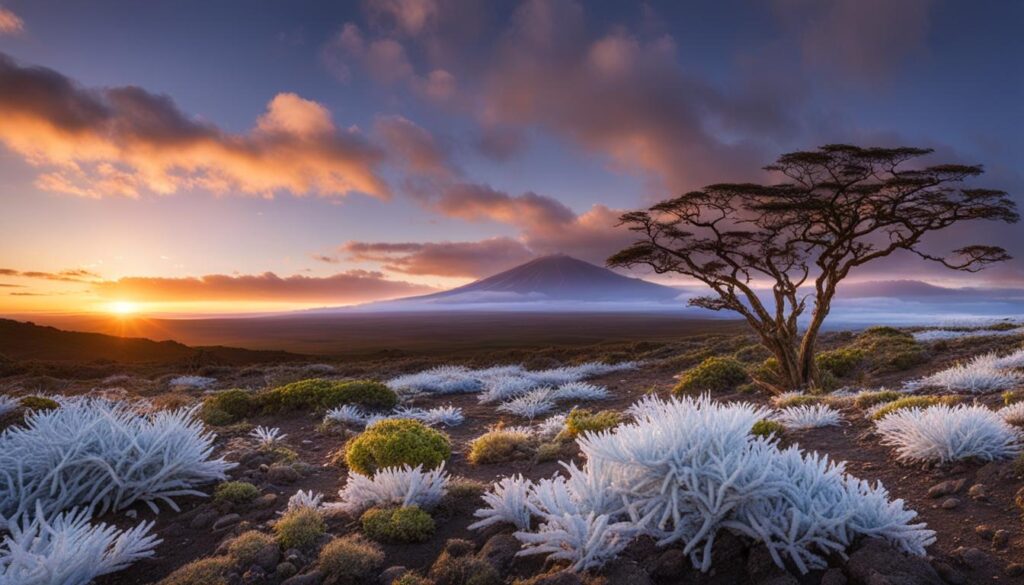
The Mauna Kea Ice Age Reserve has a rich history that showcases the cultural heritage and geological significance of the Hawaiian Islands. Nestled on the southern slope of Mauna Kea, a towering volcano, the reserve’s location holds archaeological importance. One of the notable features within the reserve is the Mauna Kea Adz Quarry, known as the largest primitive rock quarry in the world. This quarry played a significant role in ancient Hawaiian culture, as it provided the necessary basalt for crafting stone tools, including adzes.
The Mauna Kea Adz Quarry complex offers a fascinating insight into the resourcefulness and craftsmanship of early Hawaiian inhabitants. Recognized as a National Historic Landmark, it stands as a testament to the ingenuity and cultural heritage of the Hawaiian people. Exploring the quarry site within the reserve allows visitors to appreciate the historical significance and gain a deeper understanding of the region’s past.
The Mauna Kea Adz Quarry: Key Facts
| Location | Significance | Size |
|---|---|---|
| Mauna Kea Ice Age Reserve | Largest primitive rock quarry in the world | Unknown |
| Accessibility | Accessible within the reserve | N/A |
| Cultural Importance | Insight into ancient Hawaiian culture and craftsmanship | N/A |
The Mauna Kea Ice Age Reserve preserves not only the natural landscapes of Hawaii but also its cultural heritage. By exploring the park’s history, visitors can gain a deeper appreciation for the region’s geological significance and the resourcefulness of its early inhabitants.
Conclusion
The Mauna Kea Ice Age Reserve is a remarkable destination that allows visitors to delve into the natural and cultural history of Hawaii. With its diverse ecosystems, archaeological treasures, and breathtaking landscapes, the reserve offers an unforgettable experience for nature enthusiasts, history buffs, and anyone seeking a deeper connection with the land.
From hiking through unique desert landscapes to gazing at the stars in one of the state’s only alpine lakes, there are endless activities to explore at the reserve. While accommodations are not available within the reserve, nearby options provide a comfortable base for your adventures.
Remember to respect the environment and adhere to the guidelines provided by the reserve management. By doing so, we can ensure the preservation of this precious natural and cultural heritage for future generations to enjoy. Plan your visit to the Mauna Kea Ice Age Reserve and immerse yourself in the beauty and wonder of Hawaii’s geological past.
FAQ
What is the Mauna Kea Ice Age Reserve?
The Mauna Kea Ice Age Reserve is a unique natural area in Hawaii that offers a glimpse into the geological past of the region.
Where is the Mauna Kea Ice Age Reserve located?
The reserve is located on the southern summit flank of Mauna Kea in Hawaii.
When was the Mauna Kea Ice Age Reserve established?
The reserve was established in 1981.
What are the highlights of the reserve?
The reserve features sparsely vegetated cinder and lava deserts, rare natural communities, an invertebrate-dominated aeolian desert, the state’s only alpine lake, and impressive geological and archaeological features.
What activities can visitors engage in at the reserve?
Visitors can hike to Lake Waiau, engage in bird watching, stargazing, photography, and explore the volcanic features and geological history of the area.
Are there accommodations within the reserve?
No, there are no overnight accommodations within the reserve. However, there are various options available nearby.
What can visitors expect when exploring the area around the reserve?
Visitors can expect breathtaking views from the summit of Mauna Kea, additional attractions in the surrounding region, and opportunities to learn about the natural beauty and history of Hawaii.
What services and facilities are available at the reserve?
While there are no specific services and facilities within the reserve, amenities such as restrooms, parking, and informational signage can be found at the Mauna Kea Visitor Information Station, which serves as a gateway to the reserve.
What is the historical significance of the Mauna Kea Ice Age Reserve?
The reserve holds archaeological significance, particularly with the Mauna Kea Adz Quarry, the largest primitive rock quarry in the world. It provides insight into the craftsmanship and resourcefulness of early Hawaiian people.
Why should visitors explore the Mauna Kea Ice Age Reserve?
Visitors should explore the reserve to experience the natural and cultural history of Hawaii, including rare ecosystems, archaeological sites, and stunning landscapes.
